A Healthy Earth is Our Duty and Urgent Necessity: 2021 Earth Day

Since 1970, Earth Day is celebrated on April 22nd every year. The Day is a reminder of the urgent environmental challenges of the current times. It is a reminder of the need to make continually smart investments in sustainable technologies, forward-thinking public policies, of the need to improve environmental education.
Climate change and other environmental degradations have broken our natural systems, leading to irreparable harm to humanity and the planet. Humanity faces the urgent necessity to remedy the dangerous situation and use all possible means for this without delay.
We must restore our Earth not just because we care about the natural world, but because we live on it.

Every one of us needs a healthy Earth. It is our Mother and home. We must take care of it to preserve our life, health, to ensure happiness, well-being and prosperity of every person and the world as a whole.
Restore Our Earth
The theme for Earth Day 2021 is “Restore Our Earth”. It focuses on the natural processes, emerging green technologies, and innovative thinking that can restore the world’s ecosystems. More than one billion people in 192 countries participate in Earth Day activities each year.
On Earth Day 2021 which coincided with the fifth anniversary of the opening for signature of the UNFCCC Paris Agreement, the United States convened the Leaders’ Climate Summit on Climate. The main goal of the Summit is to intensify the efforts of the largest economies to solve the pressing climate problems.

During the Summit, forty world leaders underscored the urgency – and the economic benefits – of stronger climate action and highlighted examples of how enhanced climate ambition will create green jobs, advance innovative technologies, and help vulnerable countries adapt to climate impacts.
April 20 – A global youth climate summit
Earth Day 2021 began with a global youth climate summit led by Earth Uprising, in collaboration with My Future My Voice, OneMillionOfUs and hundreds of youth climate activists.
The global youth summit consisted of panels, speeches, discussions, and special messages with today’s youth climate activists including Greta Thunberg, Alexandria Villaseñor, and Licypriya Kangujam.

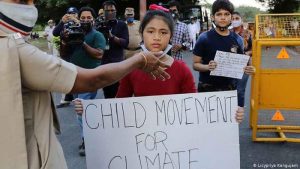
In the evening of April 20, the Hip Hop Caucus and its partners presented the “We Shall Breathe” virtual summit. This digital event examined climate and environmental justice, connecting the climate crisis to issues of pollution, poverty, police brutality, and the pandemic, all within a racial justice framework.
April 21 – Teach for the Planet: Global Education Summit with Education International
The multilingual virtual summit spanned several time zones and featured prominent activists from every continent, focused on the crucial role that educators play in combating climate change and why we need transformative climate education now.
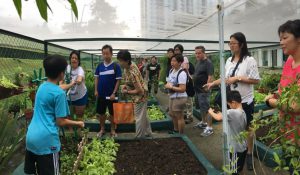
April 22 –Earth Day Live digital event .
Workshops, panel discussions, and special performances focused on Restore Our Earth took place in many countries of the world. The event covered natural processes, emerging green technologies, and innovative thinking that can restore the world’s ecosystems.
More topics included:
Climate and environmental literacy. Climate restoration technologies. Reforestation efforts. Regenerative agriculture. Equity and environmental justice.. Citizen science.. Cleanups, and more.

World climate leaders, grassroots activists, nonprofit innovators, thought leaders, industry leaders, artists, musicians, influencers, and the leaders of tomorrow gathered to push us towards a better world.
Five pillars of “Restore Our Earth” are:
The canopy project. Food and environment. The great global cleanup. Climate literacy. Global earth challenges.
The Canopy Project aims at improving our shared environment by planting trees across the globe. Since 2010, EARTHDAY.ORG has planted tens of millions of trees with The Canopy Project.
EARTHDAY.ORG works with global partners to reforest areas in dire need of rehabilitation, including areas with some of the world’s communities most at-risk from climate change and environmental degradation.
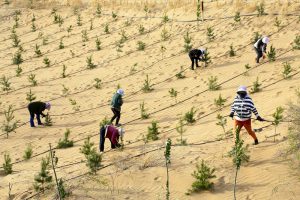
How does reforestation help the planet
Since the beginning of the 20th century, the world’s forests have lost about 20% of their coverage. According to the United Nations’ Food and Agriculture Organization, about 7.3 million hectares (18 million acres) of forest are lost every year, and roughly half of Earth’s tropical forests have already been cleared.
Planting billions of trees across the world is one of the biggest and cheapest ways of taking CO2 out of the atmosphere to tackle the climate crisis. Not only do forests act as carbon sinks, but they also provide vital habitat for animals and ecological services for humans, such as purifying the air we breathe and regulating local temperatures.


Responsible reforestation programs can stabilize land from erosion or natural disasters, improve soil health and groundwater recharge, promote native and endemic fauna, and provide economic development for nearby communities.
Fight climate change with diet change.
What is a foodprint? A foodprint measures the environmental impacts associated with the growing, producing, transporting, and storing of our food— from the natural resources consumed to the pollution produced to the greenhouse gases emitted.
There are many factors, including access, affordability, health and culture that help shape our decisions about what we eat.

There is not one prescribed diet for everyone. Through the campaign Shrink your foodprint, environmental activists want to highlight the different ways individuals and institutions can make an impact on their foodprints.
The Great Global Cleanup
Some Facts About Global Waste. 270,000 premature deaths are caused annually by uncontrolled burning of household waste. 2 BILLION people live without any waste collection services. 79% of all plastics ever produced have accumulated in the natural environment or landfills.
The streets of many cities are littered with plastic packaging.
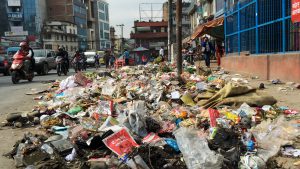
Millions participate in World Cleanup Day and National Cleanup Day
Around the world, participants of all ages and backgrounds tackle out-of-control waste, educate others on the perils of single-use plastic and encourage individuals and governments to change behavior and policies regarding consumption and waste.
From Sea to Shining Sea – in all 50 U.S. states and territories – over 2 million volunteers have united to cleanup. “The tremendous increase in volunteers shows that people are taking pride in their local communities. They are proof that we can make a difference, by just picking up just one piece of litter and have fun doing it,” says Bill Willoughby, Co-Founder of National CleanUp Day.

Across 1,200 Brazilian cities and towns, more than 500,000 people participated in the 2020 cleanup, and by the day’s end, nearly 6,000 tons of waste had been collected.

From more than 60 cleanup sites in Sao Paolo to cleanups within the Amazon Rainforest, the event was Brazil’s largest cleanup event in its history. The country exemplified what can be achieved when various sectors of society unite together toward a noble common goal.
Climate and Environmental Literacy
Combined with civic education, climate and environmental literacy will create jobs, build a green consumer market and allow citizens to engage with their governments in a meaningful way to solve climate change.
What Is Global Earth Challenges Initiative
In citizen science, public volunteers contribute to scientific research. Global Earth Challenge Initiative seeks to become the world’s largest coordinated citizen science campaign by developing a new mobile application for data collection, and a platform for global citizen science data.
Through the mobile app, Global Earth Challenge empowers people around the world to monitor threats to environmental and human health in their communities. After sharing data, people can take action to drive policy change. A new open data platform will make it easier for researchers around the world to find and access high-quality information and use citizen science data for international policy assessments like the U.N. Sustainable Development Goals (SDGs).

The main goals of Global Earth Challenge are:
Goal 1 is to increase the amount of open and findable, accessible, interoperable, and reusable (FAIR) citizen science data to help researchers and policymakers understand how the environment is changing. Data from the Global Earth Challenge app, along with data from other citizen science projects, will be accessible through a new open data platform, the Citizen Science Cloud.
Goal 2 is to empower people around the world to act on their knowledge to build safer, healthier communities.
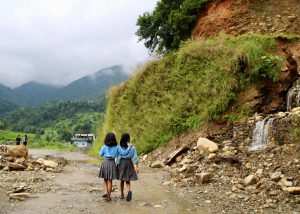
In addition to open data, Global Earth Challenge will share maps of what people are finding around the world. The project will also publish educational resources such as lesson plans and “What You Can Do” materials to support citizen advocates. These resources will make citizen science accessible and meaningful, linking participation in scientific research to education and action.
FOLLOW THE GLOBAL EARTH DAY MOVEMENT


































